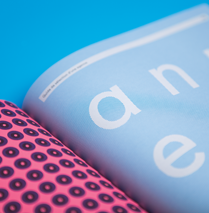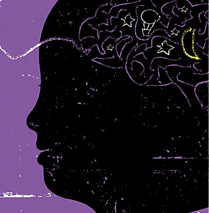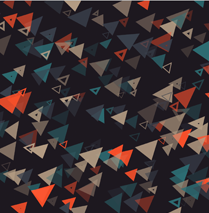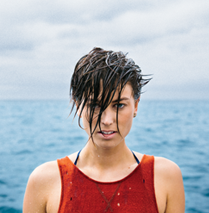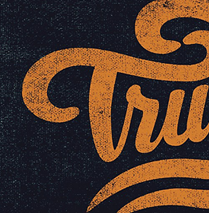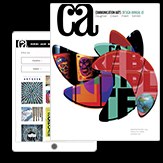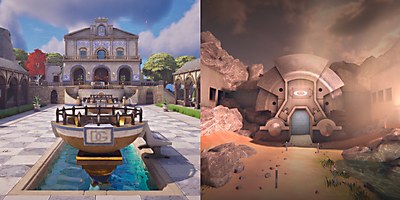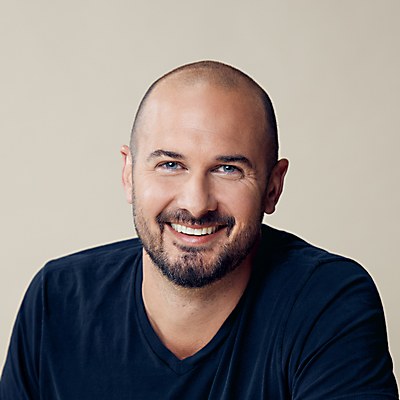How did you get started in managing digital experiences and learn the necessary skills for the industry? I was already familiar with managing live events before I moved into digital experiences. The knowledge of how to manage lots of people and multiple tasks at the same time came from that. My career has been very diverse so far: I started working in a restaurant at seventeen, and to this day, I still believe the true source of all experiences is gastronomy. People have been coming together and sharing stories and food since the beginning of time. I’m passionate about it, and I can see myself—long term—redirecting my experiential work in that direction once again.
Regarding my first experience in a digital studio, I started with project management of prebuilt interactive product experiences. This helped me gain a solid understanding of the technology we were using, such as tracking cameras and laser sensors. I’m grateful for the proper onboarding I experienced there and the time afforded to me to learn before diving straight into projects.
I studied media design at the Akademie Deutsche POP Köln in Köln, Germany, part time until the administration moved evening classes to daytime. Unfortunately, this didn’t fit with my work schedule, and since online classes weren’t possible then, I had to quit two months before my final exam. That said, I did leave with a firm understanding of how things worked. Funny how much easier it is nowadays. Back then, I was lucky enough to be working with an incredible team at Köln-based digital creative agency Demodern, who taught me about long-term strategic management and 360-degree customer journeys.
Tell us a bit about borabora, a Cologne-based design and technology studio that creates real-time storytelling experiences for brands. What do you do in your role there as a partner focused on experience strategy? We are a team of designers and engineers from all over the world working out of Cologne and Barcelona. We are a sparring partner for multiple brands and creative agencies to create interactive spatial concepts and games, from consulting and designing to production and rollout. In comparison to other agencies, we have more creative technologists—almost 50 percent of the team. This lets us be very hands-on with early prototyping to prove those concepts. As a partner, I am also responsible for business development. My project work means I oversee concepts and support the creative strategy.
Gamification has been a novel approach in connecting brands with audiences, particularly in communicating your clients’ abilities in an interactive way. How do you incorporate gamification into your work at borabora, and what would you consider its strengths? In my opinion, there’s not enough gamification. I would love to do a lot more. At borabora, we all love to play and get together regularly for sporting activities. The team is actually rather active: skating, surfing, bouldering, you name it. Since we all work from the office—not so much remotely—we are lucky enough to be able to maintain this sports connection. It’s part of our natural internal development, which means we don’t have to partake in any kind of company team-building events. It’s definitely the best way to learn from one another in a fun way, with clear instructions and objectives.
I’ve heard the term “main character syndrome” in social media discourse, but I’ve never heard it used in discussions of strategy before. How do you define main character syndrome, and what impact has it had on your approach to creating experiential design? Experiences are inherently subjective, shaped by individual perceptions, beliefs and interpretations. Main character syndrome can heighten this subjectivity by causing individuals to prioritize their own experiences and perspectives over those of others and to tailor them to their own preferences, as with social media. Recognizing and addressing this syndrome can be integral to fostering a deeper understanding, empathy and connection within experiential learning. For experiential design, this can be created through personalized storytelling and heroic challenges where the participant generates content or, on a bigger scale, from a communal approach. When participants come together to share their stories, this creates a sense of unity and facilitates a positive brand association.
What have been some of your favorite projects you’ve worked on at borabora? I’m always inspired by real-life projects where we bring digital applications or solutions to events or exhibitions. I loved working with the Food Academy on a gamified exploration application, even though it’s not a big fancy love brand project.
The Food Academy is the German center of competence for supermarkets and food retailing. To enhance its students’ training and customer journey simulation, the center asked us to design and develop a tablet application with different shopper behavior personas. It was fun to dive into this topic and create personas, stories and multiple journeys with different features like AR packaging enlargements. We also implemented an ultra-wide-band indoor navigation system to guide the user through the supermarket. The applications would have worked perfectly well without a story or any 3-D character, but the joy of use and experiential approach would have been completely missing.
Because of this and the gamification elements, students love to take on roles, play and learn. Gamification adds so much value to concepts, especially in an edutainment context. For me, it’s the next level of UX and will become even more relevant to all forms of communication.
Accessibility and seamless integration both prove important challenges to consider when designing an experience. What factors do you think make an experience successful, and how does borabora’s prototyping process account for these factors? From my point of view, a clear understanding of achievement and individual goals need to define success. Sometimes, the aim of a project is to solely generate lots of social media hype and clicks. The experience is built and executed physically, but the main objective is the captured footage. So here, high click rates and traffic data are defining success. I would rather define success when we can rethink given structures and settings in a way where people have fun using them so that they continue talking about them in the long run.
What tools do you find indispensable for your work? Collaborative visual boards like Design and UX Wireframes in Figma, Firefly, Midjourney, and Miro for fast moods and storyboard content. I love the Poe app, too, which is a bot hub of multiple AI tools.
What emerging technologies and innovations will have the biggest impact on how you design in the next few years? Obviously, AI is changing a lot. In the long term, I think design will become even more real time. Rough concepts and simulations can now be done in a couple of hours. I can express ideas much faster than I could last year. Eventually, it will probably be a simple text-to-game AI prompt that prototypes for us. I’d also leave it at that.
AI can take some of the work away, but development is not called development for nothing. It is the human factor within the process that triggers new ideas and loops. It crystalizes focal points in order to arrive at the end result, which takes quality and requirements into account. This is especially true when there are multiple people and stakeholders involved. Everyone in project management knows this.
There is a lot of uncertainty these days. That’s why we’re not only building and developing the digital part of a project but the physical part and structure, too. This is supported with complex back-end solutions, so we can deliver the full scope of experiential design and broaden our portfolio. I feel we need to adapt faster than ever to external impacts.
I am convinced people are and always will be on the lookout for real-life events to share brand- or topic-related experiences. I’d like to add that gamification is not at odds with meaningful and significant communication either. People are looking for valuable moments. In my view, collaborative gamification concepts contribute to this.
What advice do you have for people just starting out in the industry today? Have fun challenging the status quo. Trust yourself and make decisions you are confident in. A lot of bold and creative ideas are easily destroyed because they are shared with people who just say something for the hell of saying something.
These days, we particularly need people who make things happen, people who try a lot, fail early, and win and make things better because of that. That might just be by bringing more positivity to the world. I am convinced those little things can change a lot. This is an industry where skills such as being able to listen attentively and having emotional intelligence can make in huge difference.
That’s the advice I’d give, in summing up: listen. ca



